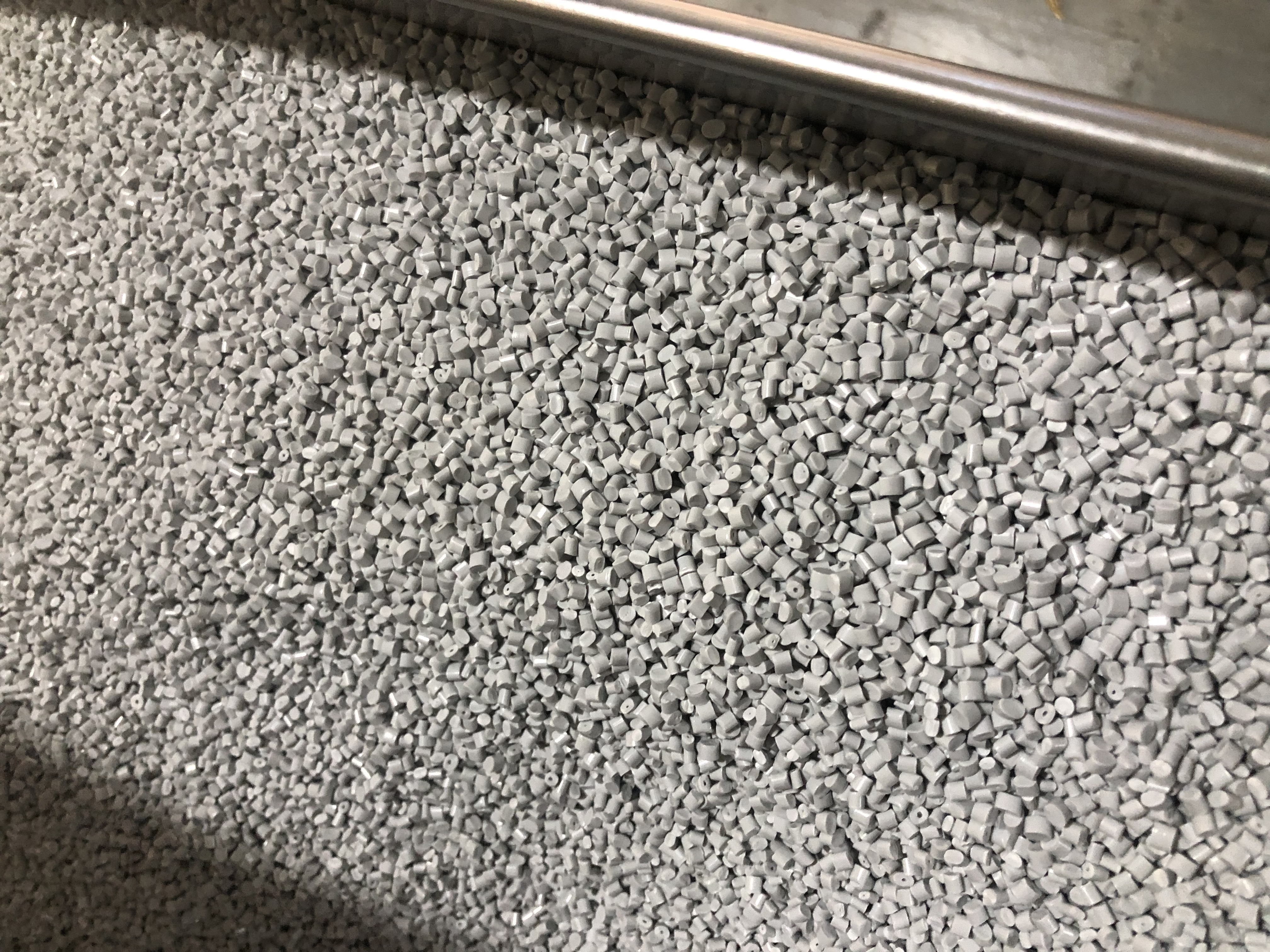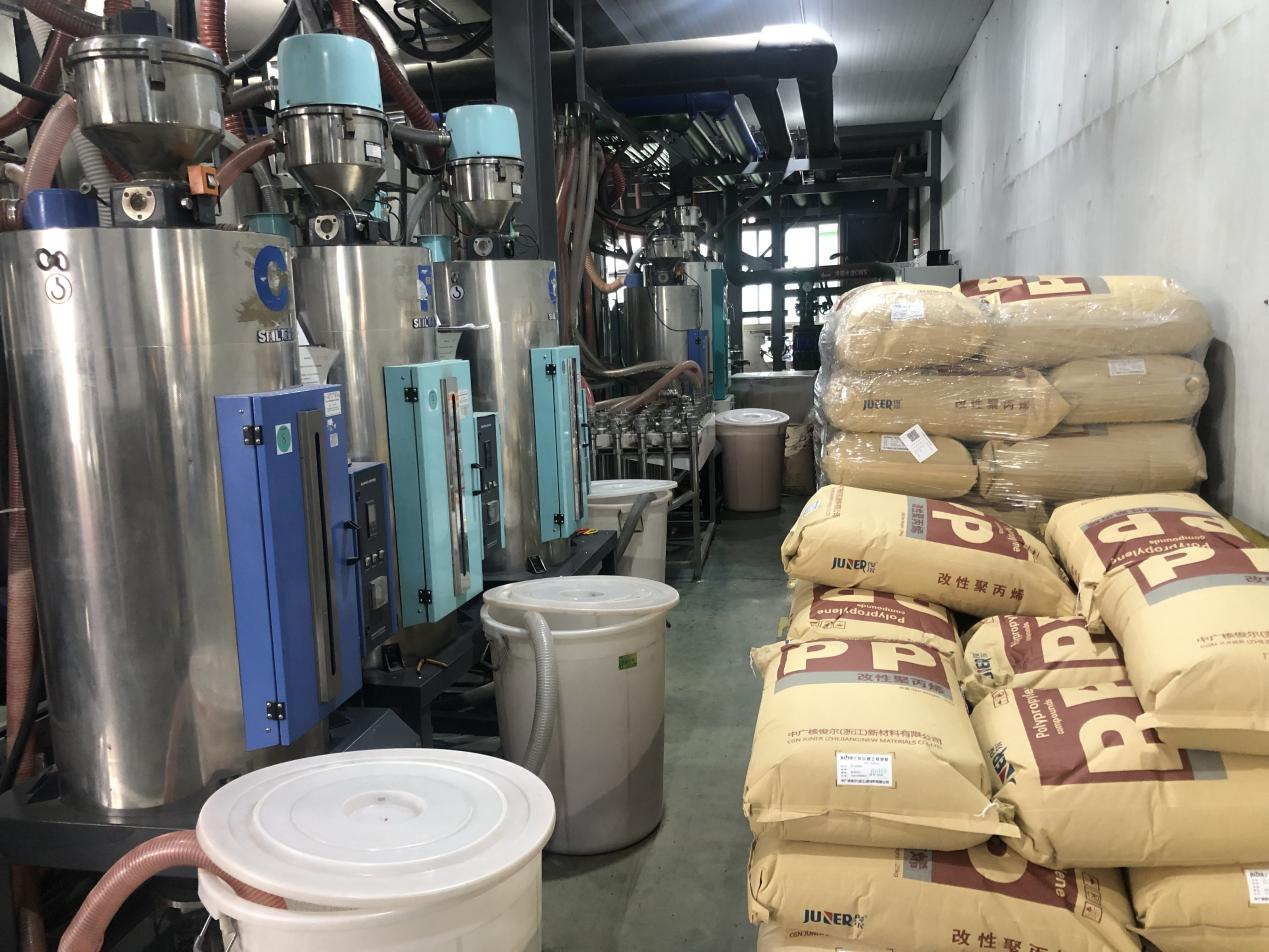By Andy from Baiyear factory
Upated November 2, 2022
Here is the news center of Baiyear’s injection molding industry. Next, Baiyear will divide the injection molding process into several articles to introduce the analysis of the raw materials of the injection molding process, because there are too many content. Next is the fifth article.
(10). POM (Saigang)
1. Performance of POM
POM is a crystalline plastic, its rigidity is very good, commonly known as “race steel”. POM is a tough and elastic material with good creep resistance, geometric stability and impact resistance even at low temperature, it has fatigue resistance, creep resistance, wear resistance, heat resistance and other excellent performance.
POM is not easy to absorb moisture, the specific gravity is 1.42g/cm3, and the shrinkage rate is 2.1% (the high crystallinity of POM causes it to have a very high shrinkage rate, which can be as high as 2%~3.5%, which is relatively large. For various reinforced materials There are different shrinkage rates), the size is difficult to control, and the heat distortion temperature is 172 ° C. POMs are available in both homopolymer and copolymer materials.
Homopolymer materials have good ductility and fatigue strength, but are not easy to process. Copolymer materials have good thermal and chemical stability and are easy to process. Both homopolymer materials and copolymer materials are crystalline materials and do not easily absorb moisture.

2. The process characteristics of POM
POM does not need to be dried before processing, and it is best to preheat (about 100 °C) during processing, which is good for product dimensional stability. The processing temperature range of POM is very narrow (195-215℃), and it will decompose if it stays in the barrel for a little longer or the temperature exceeds 220℃ (190~230℃ for homopolymer materials; 190~210℃ for copolymer materials) . The screw speed should not be too high, and the residual amount should be small.
POM products shrink greatly (in order to reduce the shrinkage rate after molding, a higher mold temperature can be used), and it is easy to shrink or deform. POM has a large specific heat and a high mold temperature (80-105°C), and the product is very hot after demolding, so it is necessary to prevent fingers from being scalded. The injection pressure is 700~1200bar, and the POM should be molded under the conditions of medium pressure, medium speed and high mold temperature.
Runners and gates can use any type of gate. If a tunnel gate is used, it is better to use the shorter type. Hot nozzle runners are recommended for homopolymer materials. Both internal hot runners and external hot runners can be used for copolymer materials.
3. Typical application range:
POM has a very low coefficient of friction and good geometric stability, especially suitable for making gears and bearings. Since it also has high temperature resistance properties, it is also used in plumbing devices (pipeline valves, pump housings), lawn equipment, etc.
(11), PC (bulletproof glue)
1. PC performance
Polycarbonate is a thermoplastic resin containing -[O-R-O-CO]-links in the molecular hair chain. According to the different ester groups in the molecular structure, it can be divided into aliphatic, alicyclic and aliphatic-aromatic types. The value is aromatic polycarbonate, and bisphenol A type polycarbonate is the most important, and the molecular weight is usually 30,000-100,000.
PC is an amorphous, odorless, non-toxic, highly transparent colorless or slightly yellow thermoplastic engineering plastic with excellent physical and mechanical properties, especially excellent impact resistance, high tensile strength, flexural strength and compressive strength; Good toughness, good heat and weather resistance, easy to color, low water absorption.
The thermal deformation temperature of PC is 135-143 °C, with small creep and stable size; it has good heat resistance and low temperature resistance, and has stable mechanical properties, dimensional stability, electrical properties and resistance in a wide temperature range. Flammability, can be used for a long time at -60~120℃; no obvious melting point, it is molten at 220-230℃; due to the high rigidity of the molecular chain, the resin melt viscosity is large; the water absorption rate is small, and the shrinkage rate is small (generally 0.1 %~0.2%), high dimensional accuracy, good dimensional stability, and low air permeability of the film; it is a self-extinguishing material; stable to light, but not UV-resistant, and has good weather resistance;
Oil resistance, acid resistance, strong alkali resistance, oxidizing acid, amine, ketone, soluble in chlorinated hydrocarbons and aromatic solvents, inhibiting bacteria, flame retardant and pollution resistance, easy to cause hydrolysis and cracking in water for a long time, The disadvantage is that it is prone to stress cracking due to poor fatigue resistance, poor solvent resistance, poor fluidity and poor wear resistance. PC can be injection moulded, extruded, moulded, blow thermoformed, printed, bonded, coated and machined, the most important processing method being injection moulding.
2. Process characteristics of PC
PC material is more sensitive to temperature, its melt viscosity decreases significantly with the increase of temperature, the flow is accelerated, and it is not sensitive to pressure. The PC material should be fully dried before processing (about 120 ℃, 3~4 hours), and the moisture should be controlled within 0.02%. The trace amount of moisture processed at high temperature will cause the product to produce white turbid color, silver threads and bubbles, and PC at room temperature It has considerable forced high elastic deformation ability. High impact toughness, so it can be cold-pressed, cold-drawn, cold-rolled and other cold forming processes.
The PC material should be formed under the conditions of high material temperature, high mold temperature and high pressure and slow speed. Use low-speed injection for smaller gates and high-speed injection for other types of gates. It is better to control the mold temperature at about 80-110 °C, and the molding temperature is preferably 280-320 °C. The surface of the PC product is prone to air blooms, the nozzle position is prone to air streaks, the internal residual stress is large, and it is easy to crack.
Therefore, the molding processing requirements of PC materials are relatively high. PC material has low shrinkage (0.5%) and no dimensional change. Products made from PC can be annealed to eliminate their internal stress. The molecular weight of PC for extrusion should be greater than 30,000, and a gradual compression screw should be used, with a length-to-diameter ratio of 1:18~24 and a compression ratio of 1:2.5. Extrusion blow molding, injection-blow, injection-pull-blow molding can be used. High quality, high transparency bottle.
3.Typical application range:
The three major application areas of PC are glass assembly industry, automotive industry and electronics, electrical industry, followed by industrial machinery parts, optical discs, civilian clothing, computers and other office equipment, medical and health care, film, leisure and protective equipment, etc.

(12). EVA (rubber glue)
1. EVA performance:
EVA is an amorphous plastic, non-toxic, with a specific gravity of 0.95g/cm3 (lighter than water). The shrinkage rate is large (2%), and EVA can be used as the carrier of the color masterbatch.
2.Process characteristics of EVA:
EVA has a low molding temperature (160-200°C), a wide range, and its mold temperature is low (20-45°C), and the material should be dried (drying temperature 65°C) before processing. The mold temperature and material temperature are not easy to be too high during EVA processing, otherwise the surface will be rough (not smooth). EVA products are easy to stick to the front mold, and it is better to make a buckle type at the cold material hole of the main channel of the nozzle. It is easy to decompose when the temperature exceeds 250℃. EVA should use the process conditions of “low temperature, medium pressure and medium speed” to process products.
(13), PVC (polyvinyl chloride)
1. Performance of PVC:
PVC is an amorphous plastic with poor thermal stability and is susceptible to thermal decomposition (improper melting temperature parameters will lead to material decomposition problems). PVC is difficult to burn (good flame retardancy), high viscosity, poor fluidity, high strength, weather resistance and excellent geometric stability. In practical use, PVC materials often add stabilizers, lubricants, auxiliary processing agents, pigments, impact resistance agents and other additives.
There are many types of PVC, divided into soft, semi-rigid and rigid PVC, the density is 1.1-1.3g/cm3 (heavier than water), the shrinkage rate is large (1.5-2.5%), and the shrinkage rate is quite low, generally 0.2~ 0.6%, the surface gloss of PVC products is poor, (the United States recently developed a transparent rigid PVC that is comparable to PC). PVC is very resistant to oxidizing agents, reducing agents and strong acids. However, it can be corroded by concentrated oxidizing acids such as concentrated sulfuric acid and concentrated nitric acid and is not suitable for contact with aromatic hydrocarbons and chlorinated hydrocarbons.
2. Process characteristics of PVC:
Compared with PVC, the processing temperature range is narrower (160-185℃), the processing is more difficult, and the process requirements are high. Generally, drying is not required during processing (if drying is required, it should be carried out at 60-70℃). The mold temperature is low (20-50℃).
When PVC is processed, it is easy to produce air lines, black lines, etc. The processing temperature must be strictly controlled (processing temperature 185~205 ℃), the injection pressure can be as large as 1500bar, and the holding pressure can be as large as 1000bar. In order to avoid material degradation, generally With a comparable injection speed, the screw speed should be lower (below 50%), the residual amount should be less, and the back pressure should not be too high.
Mold exhaust is better. The residence time of PVC material in the high temperature barrel should not exceed 15 minutes. Compared with PVC, it is better to use large water products into the glue, and it is better to use the conditions of “medium pressure, slow speed and low temperature” for molding and processing. Compared with PVC products, it is easier to stick to the front mold. The mold opening speed (the first stage) should not be too fast. It is better to make the nozzle in the cold material hole of the runner. It is better to use PS nozzle material (or PE) material) to clean the barrel to prevent the decomposition of PVC to produce Hd↑, which corrodes the screw and the inner wall of the barrel. All conventional gates can be used.
If machining smaller parts, it is better to use a tip gate or a submerged gate; for thicker parts, a fan gate is better. The minimum diameter of the tip gate or submerged gate should be 1mm; the thickness of the fan gate should not be less than 1mm.
3. Typical application range:
Water supply pipes, household pipes, house wall panels, commercial machine casings, electronic product packaging, medical equipment, food packaging, etc.
To be continued, if you want to know more, please feel free to contact us. Baiyear is a large-scale comprehensive factory integrating plastic mold manufacturing, injection molding and sheet metal processing. Or you can continue to pay attention to the news center of our official website: www.baidasy.com , we will continue to update the knowledge news related to the injection molding processing industry.
Contact:Andy Yang
What’s app : +86 13968705428
Email: Andy@baidasy.com
Post time: Nov-29-2022






